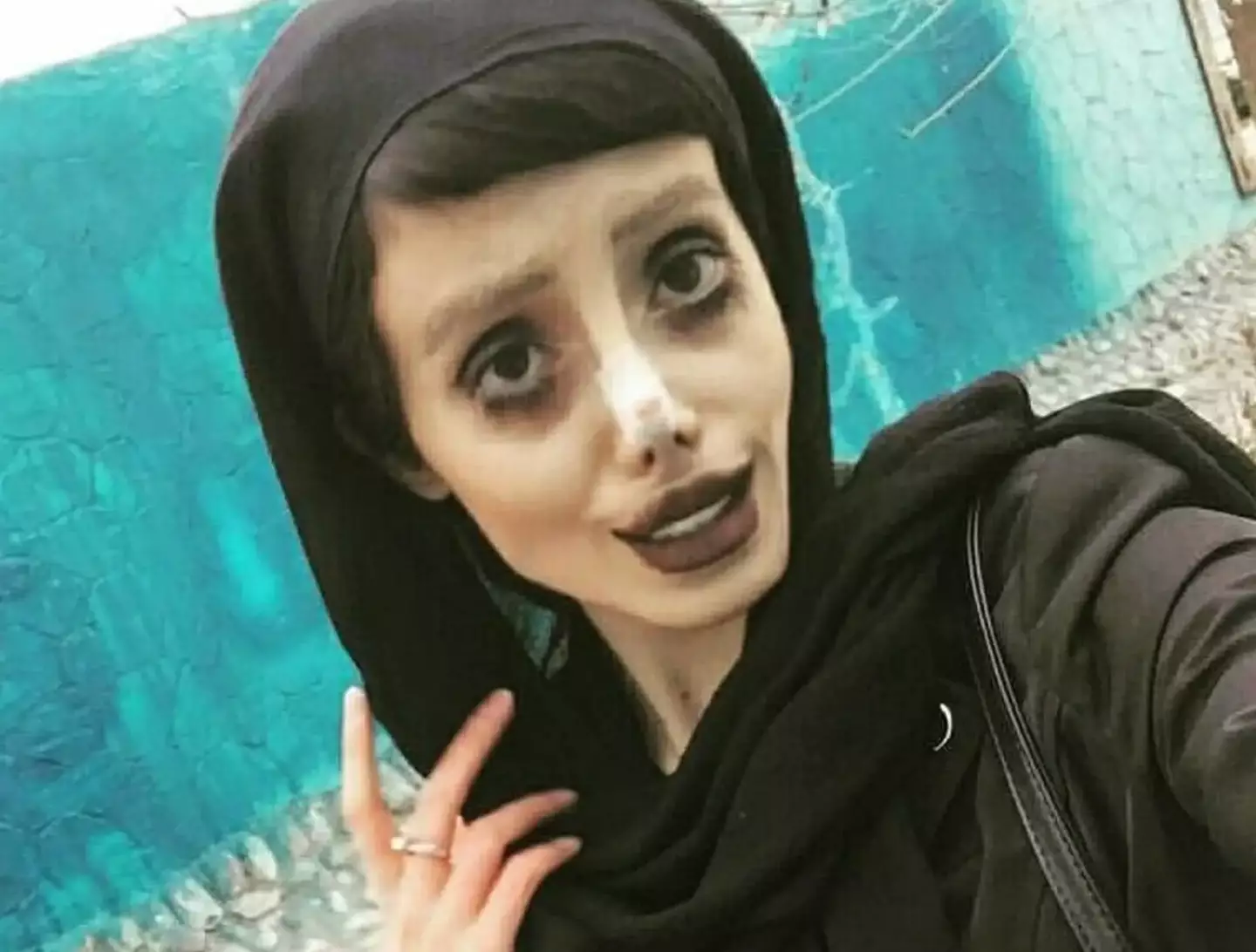Several years ago, the internet was captivated by a series of bizarre and unsettling images of a woman who bore a skeletal, ghostly resemblance to actress Angelina Jolie. Sahar Tabar, an Iranian woman, became an online sensation under the moniker “Zombie Angelina Jolie.” Her photos showed a figure with a severely distorted face, a grey complexion, and sunken eyes, creating a viral phenomenon that was both fascinating and disturbing. At the time, she claimed the images were a form of artistic self-expression, a digital character she created to amuse herself and capture the world’s attention.

This online fame, however, came with severe real-world consequences. In 2019, Iranian authorities apprehended Tabar, charging her with a series of offenses including blasphemy, inciting violence, and corrupting the youth. Her arrest was seen as part of a broader crackdown on social media influencers whose content was deemed to violate the country’s strict cultural norms. In a shocking turn of events, she was sentenced to 10 years in prison in late 2020, a punishment that seemed extraordinarily harsh for posting edited photos online.

After serving only 14 months of her sentence, Sahar Tabar was released. It was upon her release that the truth behind the viral persona was fully revealed. Appearing on a state-owned television channel, she presented a face the world had never seen. Gone was the gaunt, zombie-like figure. The woman on screen looked completely ordinary, a stark contrast to the haunting images that had defined her online. The revelation was a powerful reminder of the vast difference between a digital persona and reality.
During her television appearance, Tabar expressed regret, noting that her mother had warned her to stop her online activities, but she had not listened. She revealed that her desire for fame had been a driving force since childhood, and cyberspace provided an easy and accessible path to the spotlight that was simpler than becoming an actor. To achieve this, she admitted to using a combination of heavy makeup and sophisticated photo editing software like Photoshop to create the extreme look that captivated and horrified millions.

The public reaction to her real appearance was one of shock and reflection. Many social media users expressed sadness that someone would go to such lengths for fame, while others lamented the societal pressure that leads people to seek validation online. The story of Sahar Tabar is a cautionary tale for the digital age, illustrating the potent allure of internet fame, the potential dangers of online expression in restrictive environments, and the profound disconnect that can exist between a curated digital identity and the true self behind the screen.


